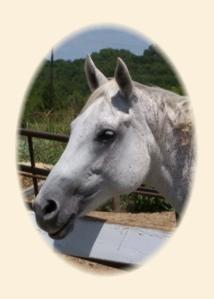The Horse Behaviour Handbook

The premise behind Abigail Hogg's book The Horse Behaviour Handbook can be see in the following quotation:
Many…difficulties arise from a lack of understanding of what kind of animal horses are and how they learn, and the belief that they can be bullied into doing what we want. Problems are created and compounded by intensive, unnatural horse–keeping practices.
While recognizing that most people cannot give their horses the natural environment which would be best for them, Abigail Hogg hopes that, by understanding the natural horse, we may be better able to understand why our domestic horses behave the way they do. Then, perhaps, we can better deal with any problems.
When we take a horse that is naturally adapted to grazing on low nutritional forage up to sixteen hours a day, for example, and feed it high–energy processed food twice a day, we should not be surprised to see it exhibit unnatural behavior. Activities such as crib chewing can be understood as giving its mouth something to do when not being able to graze. Kicking at a stall door may be seen as an effort to get food after enduring hours with an empty stomach.
Understanding natural horse behavior can also influence how we react personally with horses. Hogg states:
When we learn to ride, we are usually put on to a horse without the slightest introduction to how he “works” — how he sees, hears and thinks. We treat him as though he were a car. We don't need to know how a car works; we just need to know how to work it. With horses, the two are inseparable.
What is rational to us, may not be rational to the horse. The more we understand a horse's natural behavior, the more we can adapt our practices to helping the horse understand what we want of him.
…if we can socialize our horses as clearly as other horses do, tell them what we want and do not want from them without being confusing, and build on each lesson, we are well on the way to a relationship with our horses that is mutually satisfying.
Understanding a horse includes being sensitive to what the horse is trying to tell us. While we should not let the horse “boss us around”, we should be sensitive enough to know when a horse is not reacting to our cues as we would like because he is in pain. Just because we may be able to force the horse to do what we desire does not mean he is not suffering.
Hogg questions some commonly held views on “dominance” among horses and interpretation of their body language. She points out that: “Scientific studies show that the lead horse changes in different situations, although older horses tend to lead.” She stresses the importance of understanding the “affiliative behaviors” of horses — how they interact with each other for mutual benefit.
Abigail Hogg's book does not concern itself with methods of riding. Rather, it asks us to question our understanding of the horse both free and under saddle. The more we understand the horse, the closer we are to attaining what should be the goal of all good riders: a horse that is relaxed, attentive, and understands what is being asked of him.
A relationship based on trust, clear direction, consistent treatment and defined boundaries works with horses. It makes them comfortable because they know what is expected of them, what they can expect of us and that our judgment can be trusted not to put them in difficult situations.